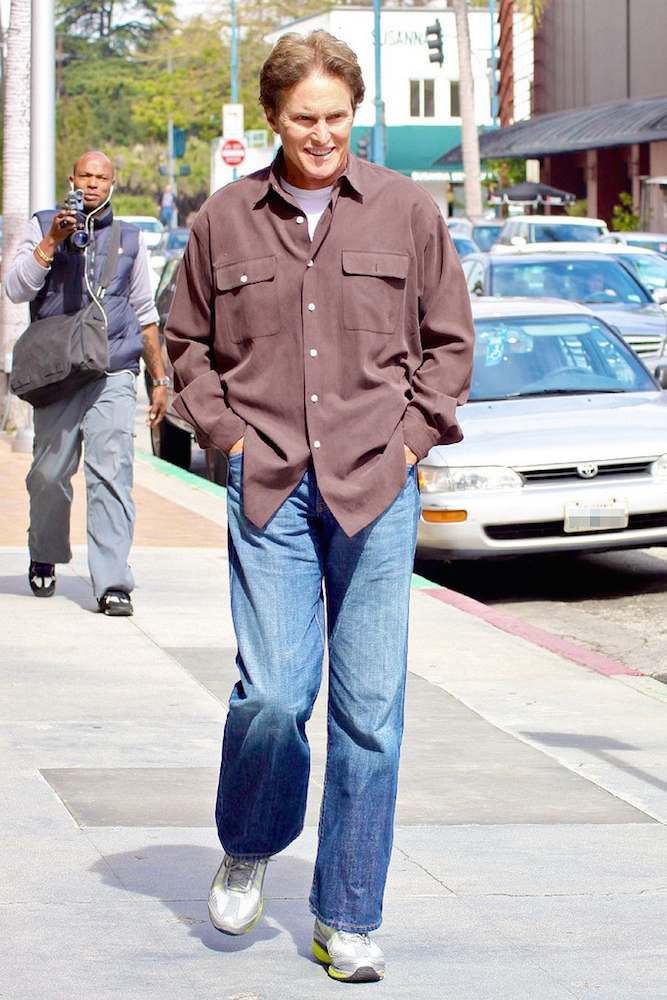Bruce Jenner's Transition: How Many Americans Are Transgender?

By opening up on national television about identifying as transgender, Bruce Jenner has become one of a small percentage of people who identify with a gender that conflicts with the one they were assigned at birth.
The most frequently cited estimate is that 700,000 people in the United States, or about 0.2 to 0.3 percent of the population, are transgender, though some experts say the true number is probably greater than that. However, there aren't reliable statistics on this, because neither the U.S. Census Bureau nor the Centers for Disease Control and Prevention ask people in national surveys whether they identify themselves as being a gender different from the one indicated by their physical features at birth.
"For all intents and purposes, I am a woman," Jenner told ABC News' Diane Sawyer in a much-anticipated interview that aired on "20/20" on Friday (April 24). Jenner is best known for being an Olympic gold-medal-winning decathlete in the 1970s, and the stepfather of the Kardashian siblings on the reality show "Keeping Up with the Kardashians." [Busted! 6 Gender Myths in the Bedroom & Beyond]
The 700,000 number comes from Gary Gates, an LGBT (lesbian/gay/bisexual/transgender) demographer at the University of California, Los Angeles, and a legal and policy expert on sexual orientation and gender identity. Gates based his estimate on four national surveys and two state-level ones, combining their results using statistical methods, according to his report published in April 2011.
In Gates' report, he looked at a Massachusetts survey conducted between 2007 and 2009, which found that 0.5 percent of adults between the ages of 18 and 64 identified themselves as being transgender.
Gates also examined data from a 2003 survey in California, which found that 3.2 percent of LGBT individuals identified themselves as transgender. Combined with surveys of the number of lesbian, gay or bisexual adults in California, this finding translates to about 0.1 percent of California adults being transgender, Gates wrote.
Like others who identify as transgender, Jenner said that he feels that his gender identity doesn't match the one he was labeled with at birth, based on his body. The designation of transgender does not indicate anything about a person's sexual orientation. (Live Science is using a male pronoun because Jenner used male pronouns to refer to himself throughout the interview.)
Sign up for the Live Science daily newsletter now
Get the world’s most fascinating discoveries delivered straight to your inbox.
Jenner's is only the latest high-profile gender transition. In 2013, U.S. Army private Bradley Manning became Chelsea Manning, and announced she was a woman.
Transgender people often express their gender identity from a young age. In his interview with Sawyer, Jenner recalled that when he was 8 or 9 years old, he tried on one of his mother's or sister's dresses. He has struggled with his gender identity his whole life, but couldn't keep "liv[ing] a lie" about who he was, he said.
Jenner said he has undergone a number of cosmetic facial surgeries and took the female hormone estrogen for five years during the late 1980s. He has been taking hormones again for the past year and a half, he added.
However, he has not yet undergone gender reassignment surgery. "As of now, I have all the male parts," he said.
Not all people who identify as transgender choose to, or can afford to, undergo this surgery, which is only one part of the transition process.
Gender studies researchers Femke Olyslager, of Ghent University in Belgium, and Lynn Conway, of the University of Michigan, Ann Arbor, estimated that at least 0.5 percent of the population has taken steps to transition to the opposite sex. That estimate comes from the researchers' findings presented at a conference on transgender health in 2007.
Transgender people face a high risk of prejudice and mental-health problems, and as many as 41 percent of transgender people in the United States have attempted suicide, according to a 2010 a survey conducted by the National Center for Transgender Equality and the National Gay and Lesbian Task Force.
Follow Tanya Lewis on Twitter. Follow us @livescience, Facebook & Google+. Original article on Live Science.










